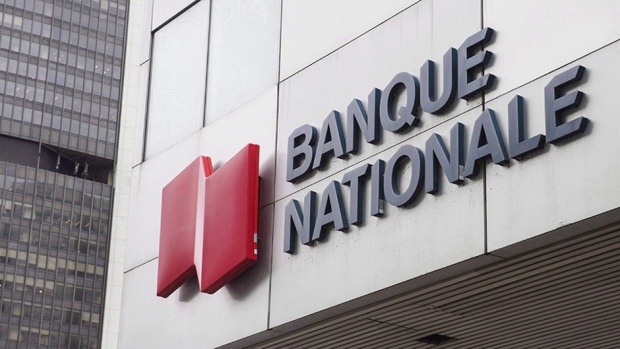Feb 28, 2018
National Bank beats estimates, welcomes Ottawa's cybersecurity spending
The Canadian Press

MONTREAL -- The head of National Bank (NA.TO) said the increased spending on cybersecurity in the latest federal budget is a welcome move as the bank pushes further into digital services.
"We view the updated strategy on cybersecurity as very positive. I think particularly the greater role for communication security establishment, in terms of their budget, but also their capability in co-ordinating their responses to incidents," said Louis Vachon on a conference call Wednesday.
The federal budget included hundreds of millions of dollars for a new cybersecurity centre, strategy, and a cybercrime co-ordination unit at the RCMP.
Vachon said that while the bank is responsible for protecting its clients and its own data, the government needs to be ready to respond to attacks from state actors and to co-ordinate its response with the private sector.
"I think the federal government took a big step forward on that with announcement yesterday," he said, noting that otherwise the budget announcements were largely neutral for the bank.
The welcoming of increased cybersecurity spending comes as National Bank invests heavily in a digital transformation. Vachon said the client digital adoption rate is increasing rapidly and self-serve transactions represent 87 per cent of total activity.
For the first quarter, National Bank beat market expectations with a profit of $550 million, up 11 per cent from $497 million a year ago.
The Montreal-based lender said the profit amounted to $1.46 per diluted share for the quarter ended Jan. 31, up from $1.34 per share in the same quarter a year earlier.
Total revenues for the bank in the latest quarter were $1.8 billion, up 11 per cent from $1.6 billion a year earlier.
On an adjusted basis, National Bank earned $1.48 per diluted share for the quarter, up from $1.35 per diluted share in the same quarter in 2017. Analysts had expected adjusted diluted earnings per share of $1.42, according to Thomson Reuters.
The bank was the latest Canadian lender to report first-quarter earnings boosted by growth at home and beyond the country's borders.
The lender saw double-digit growth in its domestic personal and commercial banking division, which earned $230 million for the quarter, up 11 per cent from a year earlier.
Its U.S. specialty finance and international division reported a larger jump in growth with a 32 per cent increase in net income to $50 million during the period.
Darko Mihelic, an analyst with RBC Dominion Securities, said the lender's better-than-expected results was driven by higher-than-expected trading revenues and core net interest income, which refers to the profit generated from loans.
"Overall, we have a mildly positive view on Q1 results as revenue and efficiency came in better than expected and the bank's capital position is strong," he said in a note to clients.
Provisions for credit losses (PCL), or money set aside for bad loans, totalled $87 million, up from $60 million in the first quarter of 2017. The bank said this increase was mainly related to loans in its U.S. specialty finance and international segment including its U.S. subsidiary Credigy, which specializes in buying troubled loans at discounted prices.
Mihelic said this stemmed from Credigy's loan arrangement with San Francisco-based Lending Club, an online peer-to-peer lending company. In November 2016, National Bank announced a deal to deploy up to $1.3 billion on the Lending Club platform over the next year.
"As these loans season, PCLs are expected to rise," Mihelic told clients.
As well, this is the first quarter for the Canadian banks to report their results using a new accounting standard which puts a larger emphasis on the banks' expected losses over the life of the loan. In turn, that has introduced more volatility for the provisions for credit losses.



